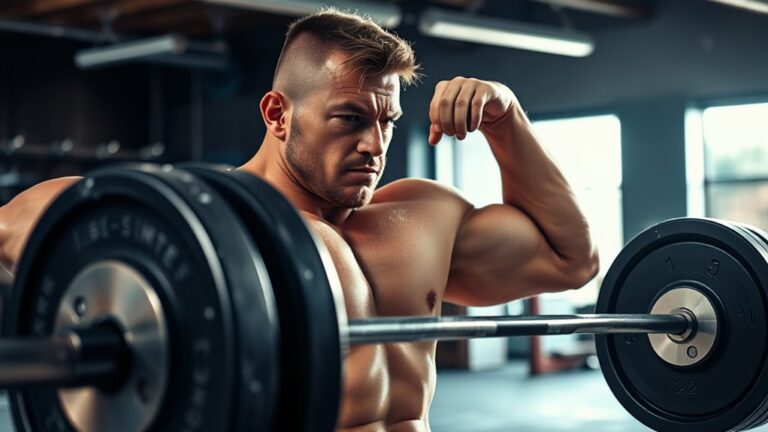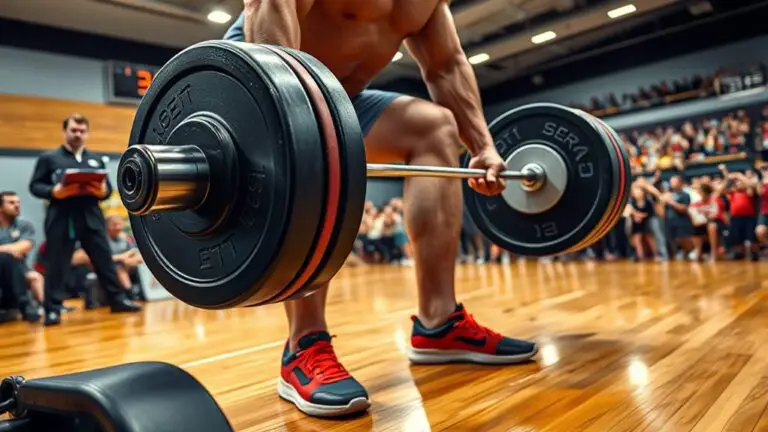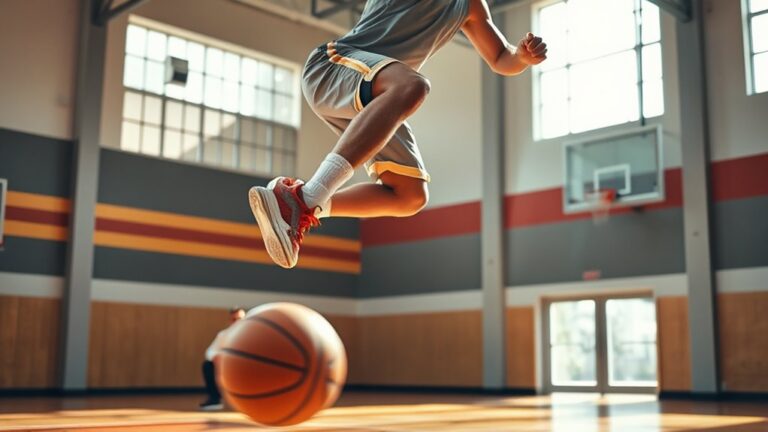The Role of Strength Training in Jiu-Jitsu Performance
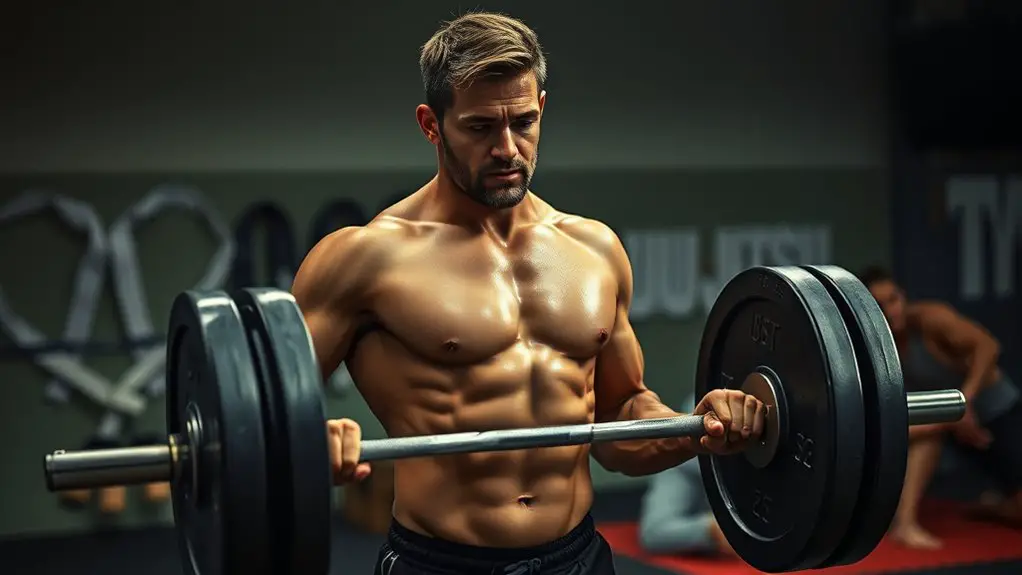
Strength training plays a critical role in elevating your Jiu-Jitsu performance. It enhances muscle endurance, boosts explosive power, and sharpens your ability to control opponents. By fortifying your muscles and connective tissues, strength training greatly reduces injury risk, allowing for longer, more effective training sessions. Incorporating targeted exercises can lead to faster recovery and improved technique execution. To maximize your results, it’s essential to balance strength gains with technical practice, paving the way for peak performance. You’ll discover more strategies ahead.
Understanding the Importance of Strength in Jiu-Jitsu
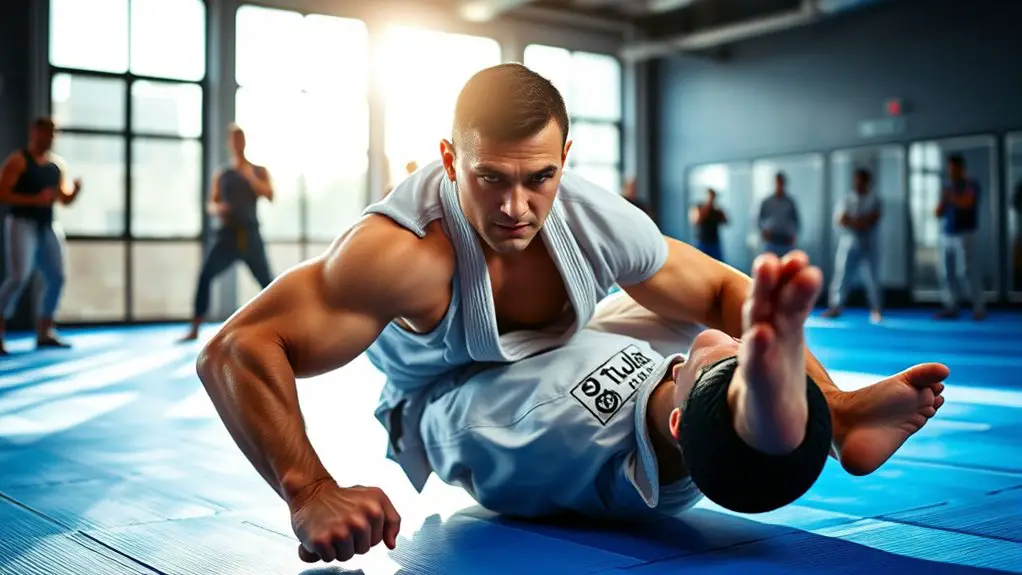
While many practitioners focus primarily on technique and strategy, understanding the importance of strength in Jiu-Jitsu can greatly enhance your performance on the mat. Strength isn’t just about brute force; it’s about developing muscle endurance, which allows you to maintain your technique under fatigue. When you enhance your strength, you’ll find that your movements become more powerful and efficient, enabling you to execute techniques with greater effectiveness.
Moreover, incorporating strength training plays an essential role in injury prevention. By strengthening your muscles and connective tissues, you reduce the risk of strains and sprains, which are common in grappling. A well-rounded strength program can help you build resilience in your body, allowing you to train harder and longer without the fear of injury. So, don’t underestimate the power of strength; it complements your technical skills and guarantees you can perform at your best, both in training and competition.
Key Benefits of Strength Training for BJJ Athletes
Strength training offers numerous advantages for BJJ athletes looking to elevate their game. First and foremost, it enhances muscle endurance, allowing you to maintain peak performance throughout intense sparring sessions and competitions. Stronger muscles delay fatigue, enabling you to execute techniques more efficiently and effectively.
Additionally, strength training plays an essential role in injury prevention. By building a solid foundation of strength, you fortify your joints and ligaments, reducing the risk of common BJJ injuries. This proactive approach helps you stay on the mats longer and recover faster from the rigors of training.
Moreover, improved strength translates to better control over your opponent, giving you a competitive edge in grappling situations. When you combine enhanced muscle endurance with injury prevention, you create a sustainable training regimen that not only optimizes your performance but also guarantees longevity in your BJJ journey. Embrace strength training to release your full potential on the mat.
Types of Strength Training Exercises for Jiu-Jitsu

Incorporating a variety of strength training exercises into your BJJ routine can greatly enhance your performance on the mats. Focus on bodyweight exercises like push-ups, pull-ups, and squats, as they build functional strength and improve your control over your own body. These movements mimic the dynamic nature of grappling, making them particularly beneficial.
In addition to bodyweight training, include resistance training with weights or resistance bands. Exercises like deadlifts, bench presses, and kettlebell swings can help develop explosive power and overall strength, essential for executing techniques effectively.
Don’t forget to target specific muscle groups relevant to Jiu-Jitsu, such as the core, back, and legs. By incorporating both bodyweight and resistance training into your regimen, you’ll not only enhance your physical abilities but also build the resilience and stamina needed to excel on the mats. Stay consistent, and you’ll see significant improvements in your performance.
How to Create a Strength Training Program for BJJ
Creating an effective strength training program for BJJ requires a structured approach that balances intensity, volume, and recovery. First, you need a solid program structure, typically organized into phases: foundation, strength, and peak. Begin with foundational movements like squats and deadlifts to build a base. Then, focus on exercise selection that mimics BJJ movements—incorporate pulling, pushing, and rotational exercises to enhance functional strength.
Next, consider the volume and intensity. Start with moderate weights and higher repetitions to build endurance, gradually increasing weight while lowering reps for strength gains. Don’t forget recovery; schedule rest days and listen to your body to prevent overtraining.
Lastly, keep your goals in mind—whether improving grappling strength or overall conditioning—tailor your program accordingly. By following these guidelines, you’ll create a balanced strength training program that complements your BJJ practice and enhances your performance on the mat.
Balancing Strength Training With Technical Skill Development
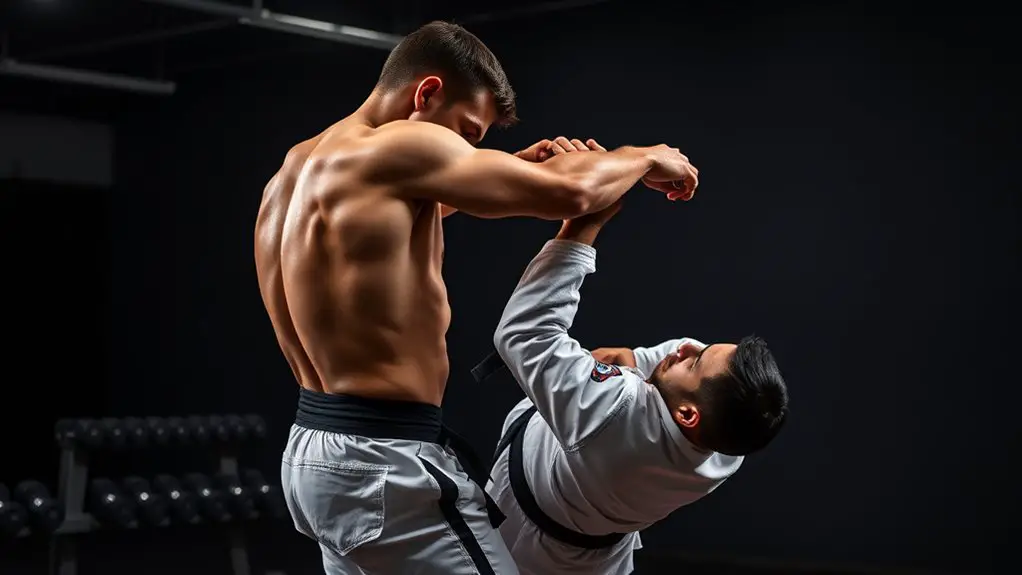
While it’s crucial to build physical strength for BJJ, equally important is the need to refine your technical skills on the mat. Balancing strength training with technical skill development creates a powerful training synergy that enhances your overall performance. You can’t just lift weights; you need to integrate those gains into your grappling techniques. This skill integration allows you to apply your strength effectively, translating raw power into fluid movements during rolls.
To achieve this balance, prioritize your technical training sessions alongside your strength workouts. Focus on drilling specific techniques where you can utilize your improved strength, ensuring that each session reinforces the other. As you refine your skills, pay attention to how your newfound strength impacts your game, adapting your approach as necessary. Remember, it’s not just about being strong; it’s about being a well-rounded practitioner who can seamlessly blend strength and technique for peak performance on the mat.
Real-Life Success Stories: Strength Training in Action
When athletes blend strength training with their Jiu-Jitsu practice, the results often speak for themselves. You’ll find numerous athlete testimonials highlighting dramatic training transformations. For instance, consider a blue belt who incorporated a structured strength program. Within months, they reported not only increased power but also improved endurance on the mat. This newfound strength allowed them to execute techniques with precision, turning the tide in competitive matches.
Another athlete, a seasoned black belt, embraced strength training to combat age-related declines. The results? Enhanced mobility and resilience, allowing them to maintain an edge against younger opponents. These stories illustrate that strength training isn’t just about bulking up; it’s about optimizing your performance. By integrating specific strength exercises tailored to Jiu-Jitsu, you can release your full potential, proving that commitment to strength training can lead to remarkable improvements on the mat.
Frequently Asked Questions
How Often Should I Incorporate Strength Training Into My Jiu-Jitsu Routine?
To optimize your jiu-jitsu performance, you should aim for a strength training frequency of two to three times a week. This integration not only enhances your physical abilities but also boosts your overall resilience on the mat. Focus on compound movements that mirror jiu-jitsu techniques. Remember, consistency is key; so, listen to your body and adjust as needed. By balancing strength training with your jiu-jitsu practice, you’ll see significant improvements in your game.
Can Strength Training Improve My Flexibility for Jiu-Jitsu?
Did you know that athletes who combine strength training with flexibility exercises can improve their overall performance by up to 30%? When you incorporate strength training benefits into your routine, you’ll not only enhance your power but also your flexibility. By developing stronger muscles, you can support greater range of motion, making those tricky jiu-jitsu moves easier. So, don’t underestimate the value of a well-rounded training program to maximize your potential!
Is There an Age Limit for Starting Strength Training in Jiu-Jitsu?
There isn’t a strict age limit for starting strength training; it can benefit anyone from youth training to senior fitness. The key is to tailor programs to individual capabilities and goals. For youth, it’s about building a solid foundation, while seniors can focus on maintaining mobility and strength. Regardless of age, you can safely incorporate strength training into your routine with proper guidance, ensuring you enhance your overall performance and well-being in Jiu-Jitsu.
Should I Focus on Strength Training During Competition Season?
You might think strength training’s not vital during competition season, but it can actually enhance your performance. Focus on maintaining a strength balance that complements your competition strategy. Prioritize functional strength and endurance, allowing you to execute techniques effectively. While skill and technique are important, a solid strength foundation can help you withstand opponents’ pressure and improve your overall resilience. Embrace strength training to elevate your game and increase your confidence on the mat.
How Do I Prevent Injury While Strength Training for Jiu-Jitsu?
To prevent injury while strength training, prioritize proper technique and form during each exercise. Incorporate injury prevention strategies like dynamic warm-ups and cool-down stretches. Gradually increase your strength conditioning intensity to allow your body to adapt. Don’t forget to listen to your body; if something feels off, it’s essential to rest or modify your routine. Balancing strength work with adequate recovery will keep you performing at your best without risking injury.
